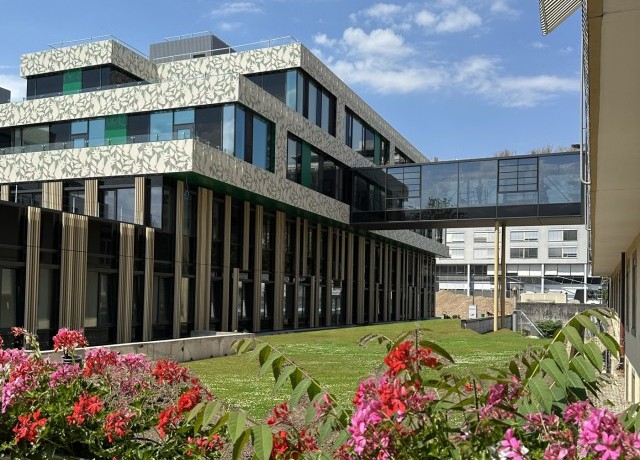
Programme
Beyond the hospital:
Form, function and the future health ecosystem
As ever greater demands are placed on health systems around the world, healthcare consumes ever larger resources as a share of national incomes. Adopting an ecosystem paradigm is an opportunity to frame the transformation of health.
Despite extraordinary advances in medicine, today’s challenges paint a picture of health systems in crisis: aging populations, the rise of non-communicable disease, long-term conditions, and increasing prevalence of mental illness; all set against global workforce shortages, inadequate physical infrastructure, and a planetary health emergency.
Adopting a health ecosystem approach to unlocking value from the complex interconnections between patients, providers, payers and community resources offers hope. If health systems can shift focus from sickness to wellness, from siloed to integrated, from volume-based to value-based, from reactive to predictive, and from standardised to personalised, a more resilient, equitable and sustainable healthcare future awaits.
Beyond building
The potential of an ecosystem approach to reduce demand through preventive measures and reduce costs by shifting services from acute to primary and community care has long been highlighted1. But now, the possibilities created by the digital revolution and AI, advances in personalised medicine and life sciences, combined with social and cultural shifts as people take more responsibility for their own health are enabling the emergence of a new ecosystem of health and wellbeing.
Politically and culturally, new hospital buildings are the ‘go to solutions’ for accommodating clinical and care needs. But our scope to construct new buildings and infrastructure, which are major contributors to carbon emissions, is increasingly limited.
More than almost any other, hospital infrastructure has embraced the doctrine ‘form follows function’. As clinical practices evolved; as technology advanced to create new medical procedures; as stretched budgets drove efficiency in human resources; and as socio-cultural practices changed, so did the functional briefs, rendering obsolete otherwise sound existing buildings and spaces.
Health providers and designers took pride in devising new spatial and tectonic solutions that fitted the brief precisely, like a well-tailored suit. Even when the inevitability of change was acknowledged2, it still took time for adaptability to become a core design principle.
In most European cities with substantially intact layers of historic urban fabric, a majority of buildings are not used for the functions for which they were built. Indeed, recently, function has adaptively sought out form, with wonderful results: restaurants in high-ceiling banking halls, studios in dockside warehouse, colleges in mansions lining city squares, and apartments in 19th-century pavilion-plan hospitals.
However, we seem to have only one way to create the hugely complex organism that is the modern acute medical centre, with its spatially diverse but inextricably interlinked parts. We build hospitals either on greenfield sites or by destroying the disparate set of buildings typical of a long-occupied hospital site. If we can no longer do that, how do we ensure we have the physical and spatial infrastructure to accommodate the healthcare needs of modern society? If we are to rely far less on new hospital building, we need to begin with conceiving of space and form, old and new, as part of this ecosystem.
New thinking
We will always need well-designed, functionally high-performing hospitals. But in what form and in which settings? How do we make more use of the vast underutilised estate? Newbuild or retrofit, how do we minimise embodied carbon emissions and resource use?
The crisis in our health systems and a planetary health emergency are creating both the need and opportunity for new thinking about making the best use of what we have and treading more lightly. This an invitation to share new knowledge and ideas, from research, practice and policy in the field.
1. Nuffield Trust ‘Building a 2020 Vision: The future of healthcare environments’ (2001)
2. John Weeks, Indeterminate Architecture, 1965

Call for Papers
The Call for Papers sets out the vision and themes for the 11th European Healthcare Design 2025 Congress, with authors invited to submit abstracts of 400 words addressing the Congress theme/s. All abstracts are subject to a rigorous blind peer-review process by the EHD 2025 Programme Committee. A carefully selected number are chosen for oral presentation with a wider number presented in poster format accompanied by a pre-recorded video talk.
This year’s Call for Papers is now closed and the evaluation underway, with authors due to be notified in February if they have been accepted prior to publication of the preliminary programme.
2025 Themes
From sickness to wellness focused ecoystems; partnering to integrate care and foster healthy communities
New service, funding and asset models that promote equity, quality improvement and strengthen health system resilience
Adaptive and humanistic environments and spaces to support clinical service planning strategies
Whole system-level adoption of digital health, AI, personalised medicine and smart hospital innovations
Applying circular economy principles and net–zero carbon strategies to services, infrastructure, workforce and supply chains
Design at the human scale to promote wellbeing, identity and dignity, support recovery, and empower patients and staff
Provisional Timetable
Chaired and directed by




